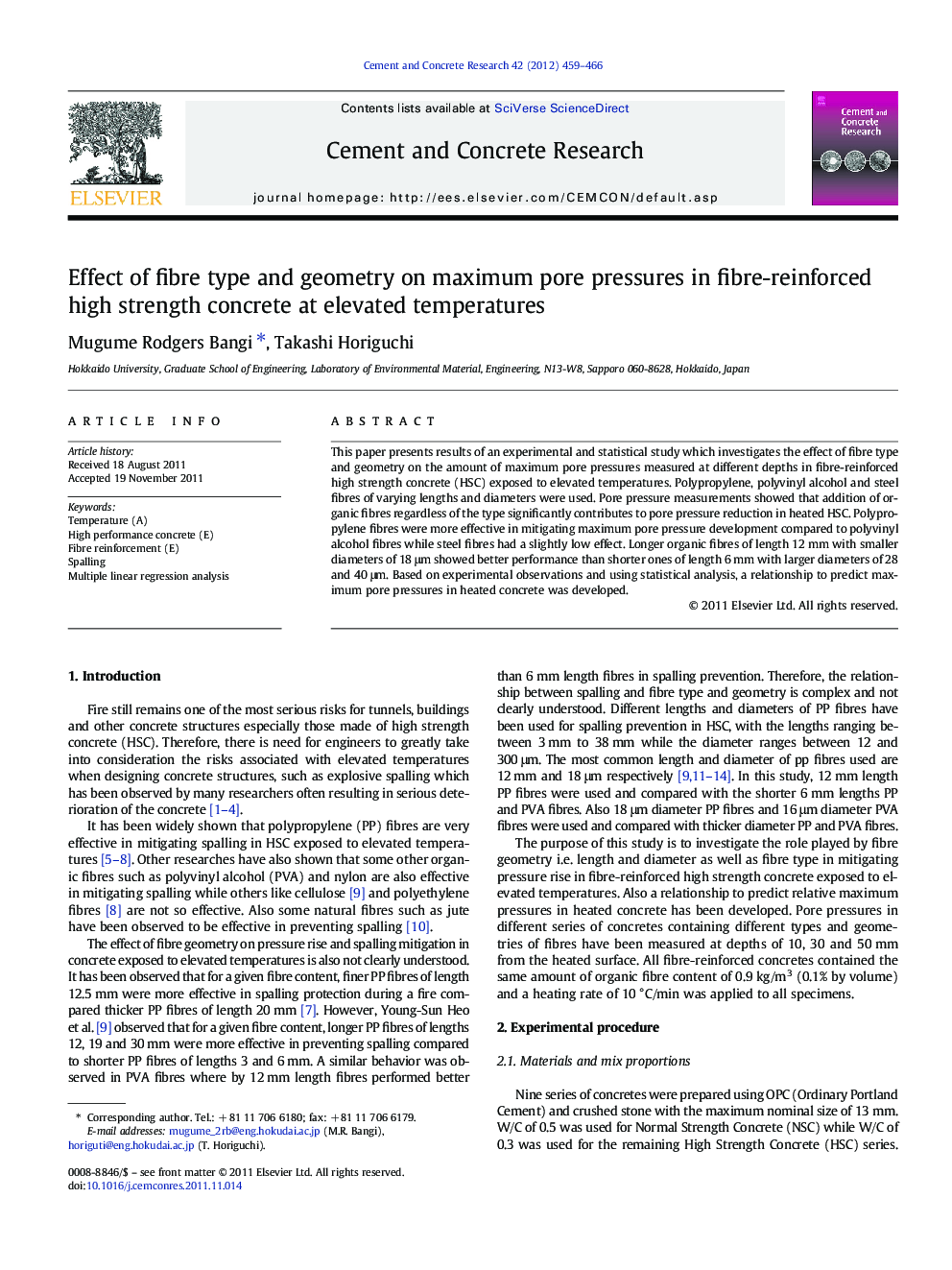| Article ID | Journal | Published Year | Pages | File Type |
|---|---|---|---|---|
| 1456802 | Cement and Concrete Research | 2012 | 8 Pages |
This paper presents results of an experimental and statistical study which investigates the effect of fibre type and geometry on the amount of maximum pore pressures measured at different depths in fibre-reinforced high strength concrete (HSC) exposed to elevated temperatures. Polypropylene, polyvinyl alcohol and steel fibres of varying lengths and diameters were used. Pore pressure measurements showed that addition of organic fibres regardless of the type significantly contributes to pore pressure reduction in heated HSC. Polypropylene fibres were more effective in mitigating maximum pore pressure development compared to polyvinyl alcohol fibres while steel fibres had a slightly low effect. Longer organic fibres of length 12 mm with smaller diameters of 18 μm showed better performance than shorter ones of length 6 mm with larger diameters of 28 and 40 μm. Based on experimental observations and using statistical analysis, a relationship to predict maximum pore pressures in heated concrete was developed.
